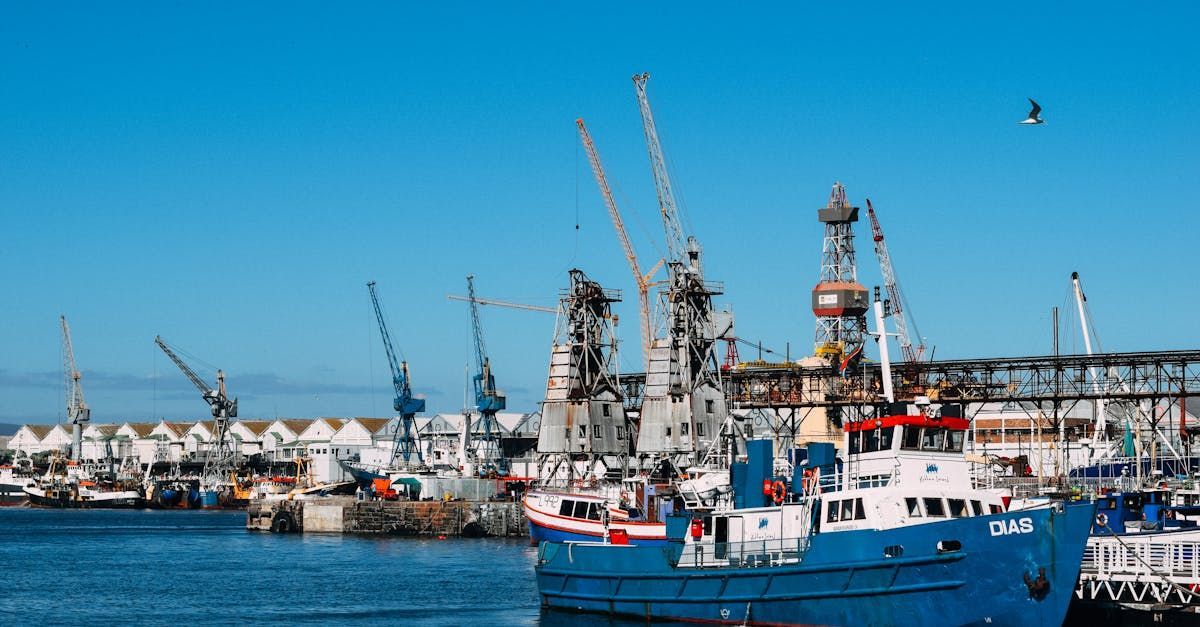Geotextile Fabric Applications in Charleston's Marine Construction

Key Takeaways
- Geotextile fabrics are essential in Charleston's marine construction projects
- These materials help with erosion control, soil stabilization, and drainage
- Common applications include seawalls, docks, and shoreline protection
- Geotextiles improve the longevity and stability of waterfront structures
- Proper selection and installation are crucial for optimal performance
- Local regulations and environmental factors influence geotextile use in Charleston
Geotextile fabrics play a vital role in marine construction projects throughout Charleston, South Carolina. These versatile materials offer numerous benefits for waterfront structures, helping to control erosion, stabilize soil, and improve drainage. In this article, we'll examine the various applications of geotextile fabrics in Charleston's marine environment and how they contribute to the durability and effectiveness of coastal structures.
Understanding Geotextile Fabrics in Marine Construction
Geotextile fabrics are synthetic materials designed to enhance soil stability and performance in construction projects. In marine applications, these fabrics are particularly useful due to their ability to withstand harsh saltwater conditions while providing essential functions such as filtration, separation, and reinforcement.
Types of Geotextile Fabrics Used in Charleston
Charleston's marine contractors typically use two main types of geotextile fabrics:
- Woven geotextiles: These fabrics are made from interlaced fibers, offering high tensile strength and excellent soil separation properties.
- Nonwoven geotextiles: Composed of randomly arranged fibers, these fabrics excel in filtration and drainage applications.
The choice between woven and nonwoven geotextiles depends on the specific requirements of each project and the environmental conditions in Charleston's waterways.
Erosion Control Applications
One of the primary uses of geotextile fabrics in Charleston's marine construction is erosion control. The city's coastal location makes it susceptible to erosion caused by waves, tides, and storms.
Shoreline Protection
Geotextiles are often used in shoreline protection projects along Charleston's coast and rivers. The fabric is placed beneath riprap or other armoring materials to prevent soil erosion and provide a stable foundation for the protective layer.
Seawall Construction
In seawall construction, geotextile fabrics serve as a filter layer between the soil and the structural components. This prevents soil particles from washing away while allowing water to pass through, reducing hydrostatic pressure behind the wall.
Soil Stabilization in Marine Environments
Charleston's marshy coastal areas often require soil stabilization measures for construction projects. Geotextile fabrics help create a stable foundation for structures built on soft or unstable soils.
Dock and Pier Construction
When building docks and piers in Charleston's waterways, geotextiles are used to reinforce the soil beneath pilings and support structures. This improves the overall stability of the structure and helps distribute loads more evenly.
Marina Development
In marina projects around Charleston Harbor, geotextile fabrics are used to create stable surfaces for boat ramps and parking areas. The fabric helps prevent soil movement and maintains the integrity of the paved surfaces.
Drainage Solutions for Waterfront Properties
Proper drainage is crucial for waterfront properties in Charleston, especially given the area's high water table and frequent heavy rains.
French Drains and Retaining Walls
Geotextiles are often used in French drain systems and behind retaining walls to facilitate water drainage while preventing soil erosion.
This is particularly important for properties along the Ashley and Cooper Rivers.
Permeable Paving Systems
For waterfront properties looking to reduce runoff, geotextile fabrics are used in permeable paving systems. These systems allow water to infiltrate the soil while preventing fine particles from clogging the drainage layers.
Environmental Considerations in Charleston
When using geotextile fabrics in marine construction projects in Charleston, it's important to consider the local ecosystem and environmental regulations.
Habitat Protection
Geotextiles can be used to create artificial reefs or protect existing habitats in Charleston's waterways. These applications must be carefully planned to ensure they don't negatively impact local marine life.
Compliance with Local Regulations
Charleston has strict regulations regarding coastal construction and environmental protection. Contractors must ensure that their use of geotextile fabrics complies with all local, state, and federal guidelines.
Installation Techniques for Marine Applications
Proper installation of geotextile fabrics is crucial for their effectiveness in marine environments. Charleston contractors must consider several factors when installing these materials.
Anchoring Methods
In tidal areas around Charleston, geotextiles must be securely anchored to prevent displacement. Common methods include trenching, stapling, and using weighted materials.
Seam Construction
For large projects, multiple sheets of geotextile fabric may need to be joined. Proper seam construction is essential to maintain the fabric's integrity and performance.
Maintenance and Long-Term Performance
While geotextile fabrics are designed for durability, they still require maintenance to ensure long-term performance in Charleston's marine environment.
Regular Inspections
Periodic inspections of geotextile installations are necessary to check for damage or degradation, especially after major storm events that are common in Charleston.
Repair and Replacement
When damage is detected, prompt repair or replacement of the geotextile fabric is crucial to maintain its protective functions and prevent further issues.
Cost Considerations for Charleston Projects
The use of geotextile fabrics in marine construction can impact project costs in several ways.
Initial Investment vs. Long-Term Savings
While geotextiles represent an additional upfront cost, they can lead to significant long-term savings by reducing maintenance needs and extending the lifespan of marine structures.
Comparison with Traditional Methods
In many cases, the use of geotextiles can be more cost-effective than traditional construction methods, especially when considering the challenging soil conditions in Charleston's coastal areas.
Innovative Uses of Geotextiles in Charleston's Marine Industry
As technology advances, new applications for geotextile fabrics are emerging in Charleston's marine construction sector.
Living Shorelines
Some projects in Charleston are incorporating geotextiles into living shoreline designs. These naturalistic approaches use geotextile bags or mats to support native vegetation and create more resilient, eco-friendly shoreline protection.
Contaminated Sediment Capping
In areas of Charleston Harbor with contaminated sediments, geotextile fabrics are being used as part of capping systems to isolate pollutants and prevent their spread into the water column.
Selecting the Right Geotextile for Your Charleston Project
Choosing the appropriate geotextile fabric is crucial for the success of any marine construction project in Charleston.
Factors to Consider
When selecting a geotextile, consider factors such as:
- Application (erosion control, soil stabilization, drainage)
- Soil type and conditions at the site
- Expected loads and stresses on the fabric
- Chemical and biological environment (saltwater, pollutants, marine organisms)
- Local regulations and permit requirements
Consulting with Experts
It's advisable to consult with geotechnical engineers or experienced marine contractors familiar with Charleston's unique conditions when selecting geotextile fabrics for your project.
Future Trends in Geotextile Use for Charleston's Marine Construction
As Charleston continues to grow and develop its waterfront areas, we can expect to see new trends in geotextile applications.
Sustainable Materials
There's a growing interest in using more sustainable and environmentally friendly geotextile materials in marine construction. This trend aligns with Charleston's commitment to environmental stewardship.
Smart Geotextiles
Emerging technologies may lead to the development of "smart" geotextiles that can monitor soil conditions or provide real-time data on structural integrity, enhancing the safety and efficiency of marine structures in Charleston.
Application Benefits in Charleston's Marine Environment Challenges Shoreline Protection Prevents erosion, stabilizes coastline High wave energy, storm impacts Seawall Construction Improves structural integrity, reduces soil loss Saltwater corrosion, tidal forces Dock Foundations Enhances stability in soft soils Varying water levels, marine growth Drainage Systems Manages water flow, reduces flooding High water table, heavy rainfall Contamination Control Isolates pollutants, protects water quality Complex installation, and monitoring needs Geotextile Type Strength Filtration Drainage Best Use in Charleston Woven High Moderate Low Soil reinforcement, separation Nonwoven Moderate High High Filtration, drainage, erosion control Composite Very High High Moderate Complex projects, severe conditions In conclusion, geotextile fabrics are an invaluable tool in Charleston's marine construction industry.
From shoreline protection to soil stabilization and drainage solutions, these versatile materials help create more durable and effective waterfront structures. As Charleston continues to balance development with environmental protection, the thoughtful use of geotextiles will play a key role in shaping the future of the city's coastal landscape. For more information, you can visit our website or contact us.
























































